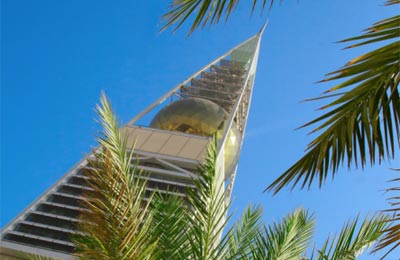
Saudi economy to grow 5.7pc in 2012
Kuwait, August 16, 2012
Backed by a strong oil sector and large government stimulus generating impressive growth figures, Saudi Arabia’s real GDP is expected to grow by 5.7 per cent this year, said a report.
Provisional data show the non-oil sector grew by 7.5 per cent in 2011, one of the stand-out performances of post-financial crisis Mena, said the latest GCC Brief from the National bank of Kuwait (NBK).
Although growth may decelerate somewhat in 2012 as the exceptional stimulus measures of 2011 wear off, various gauges of private sector activity – from surveys to credit growth – suggest that the economy has considerable momentum, the report said.
Sustained growth at a super-strong pace, however, is unlikely without deeper structural reforms.
Crude oil production reached 9.9 million barrels per day (mbpd) in May – its highest of the modern age and up 7 per cent on its average for last year.
According to the GCC Brief, barring a major fall in oil prices, Saudi Arabia is likely to keep production levels high as it seeks to replenish global inventories and support the global economy.
Oil GDP should register a solid 5 per cent or so increase this year and remain flat in 2013. Saudi Arabia’s remaining cushion of spare production capacity now stands at around 2-2.5 mbpd, close to the amount that the authorities like to maintain for contingencies. This limits the scope for further large increases in oil sector GDP.
Non-oil growth
Non-oil GDP growth in 2012 is revised up slightly from 5 per cent to 6 per cent, in light of the economy’s apparent momentum. ATM and point-of-sale figures show that the consumer sector remains buoyant following the boost to incomes in 2011 and improved bank lending conditions.
Meanwhile, the government is only halfway through its massive $386 billion investment program running 2010-2014. Non-oil fixed investment stood at 31 per cent of non-oil GDP in 2011, well above its historic average. These domestic components should hold up well amidst further turbulence in the global economy.
Inflation is expected to remain close to 5 per cent this year and next. Within this total, however, sectors will diverge, the report said.
Food price inflation should remain contained or may dip, while the government’s aggressive house building program could start to ease pressures in the rental market. On the other hand, inflation in other ‘core’ sectors such as clothing, furniture and transport could rise.
Despite the upside risks to inflation from a buoyant economy, we see the authorities leaning towards growth – rather than anti-inflation – policies over the next two years.
Government spending
According to the report, after jumping by an estimated 23 per cent in 2011, government spending growth could slow sharply in 2012 and 2013, to an average of 5 per cent per year.
Nonetheless, fiscal policy will continue to provide key support for the economy. The budget surplus will also remain very solid, at 8-15 per cent of GDP so long as oil prices remain close to $100 per barrel. Higher production has helped lower the oil price needed to balance the budget from $75 in 2011 to $72 in 2012.
Strong oil revenues will also help generate current account surpluses of 15-25 per cent of GDP in 2012 and 2013. This will help the kingdom add to its huge stock of reserve assets, which stood at $541 billion at the end of 2011, the report said. – TradeArabia News Service







